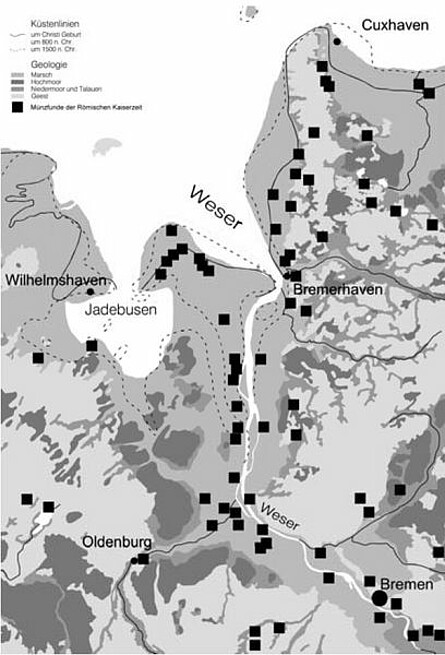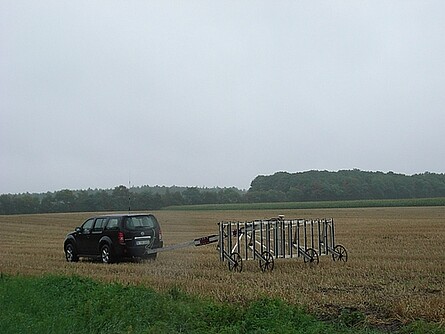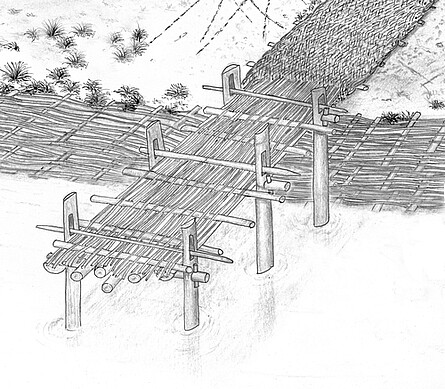Structure and Function of Landing Sites and Beach Markets of the 1st Millennium AD along the Lower Weser and Lower Ems Rivers
To this day, natural bodies of water – in particular oceans and rivers – form an important mainstay of the infrastructure for worldwide trade, traffic and exchange. The fact that they probably performed this function throughout all phases of Northwest European settlement history is demonstrated by concentrations of imported goods found along marine coasts and riverbanks. This is especially obvious for the 1st millennium AD. There is so far only a rudimentary body of knowledge about regional and interregional systems of communication and exchange as well as the environmental requirements which were exploited and the structural measures that were carried out. In order to address these questions, the estuarine river systems of the Weser and Ems will be studied within the scope of a project funded by the German Research Foundation (DFG) between 2010 and 2014. An extensive range of surveys will be carried out within the framework of the project in order to expand upon the information on the courses and navigability of 1st-millennium AD waterways which is available from drillings, digital terrain models, elevation survey analyses, as well as existing geological and soil maps. The material assemblages – metal and pottery in particular – will be integrated into the analysis in order to date river- and seaside sites and understand their function. The research project is currently in the final- and publication stages and has been directed by Dr. Annette Siegmüller. Further information is available here.
Bibliography
Siegmüller, A., 2013: Die Struktur von Landeplätzen und Ufermärkten des 1. Jt. an Weser und Ems. In: N. Fischer u. O. Pelc (Hrsg.), "Flüsse in Norddeutschland". Tagungsband Historisches Museum Hamburg. Studien zur Wirtschafts- und Sozialgeschichte Schleswig-Holsteins 50, Schriftenreihe des Landschaftsverbandes der ehemaligen Herzogtümer Bremen und Verden 41, Neumünster 2013, 441-459.
Siegmüller, A. u. Jöns, H., 2012:, Ufermärkte, Wurten, Geestrandburgen – Herausbildung differenter Siedlungstypen im Küstengebiet in Abhängigkeit von der Paläotopographie im 1. Jahrtausend. Archäologisches Korrespondenzblatt 42/4, 2012, 573-590.
Siegmüller, A. u. Jöns, H., 2011: Aktuelle Forschungen zu Weser und Hunte als Wege der Kommunikation und des Austauschs während des 1. Jahrtausends nach Chr. Nachrichten aus Niedersachsens Urgeschichte 80, 2011, 97-115.



